The Decline of Digital Publishing in the Age of AI Search
—and how Protico is ready to help

Digital Publishing’s Downturn with the Rise of AI Publishing (a.k.a "AI Search")
The conflict between traditional publishers and AI-driven search has reached new heights. Recently, The Wall Street Journal and The New York Post initiated a lawsuit against Perplexity AI, highlighting the growing tension. As a technical partner working closely with several leading publishers, we witness firsthand the struggles our partners face in adapting to an era dominated by “AI Search.”
The numbers are telling. According to data collected from Semrush for ten prominent publishers, 80% of them have experienced a severe drop in traffic since 2023, coinciding with the proliferation of GPTs and AI search tools. For instance, Semrush data reveals that TechCrunch has seen an 83.74% traffic decline since January 2023. The trend extends across tech-focused publishers like Engadget, Bloomberg, The Verge, The Wall Street Journal, and Forbes.
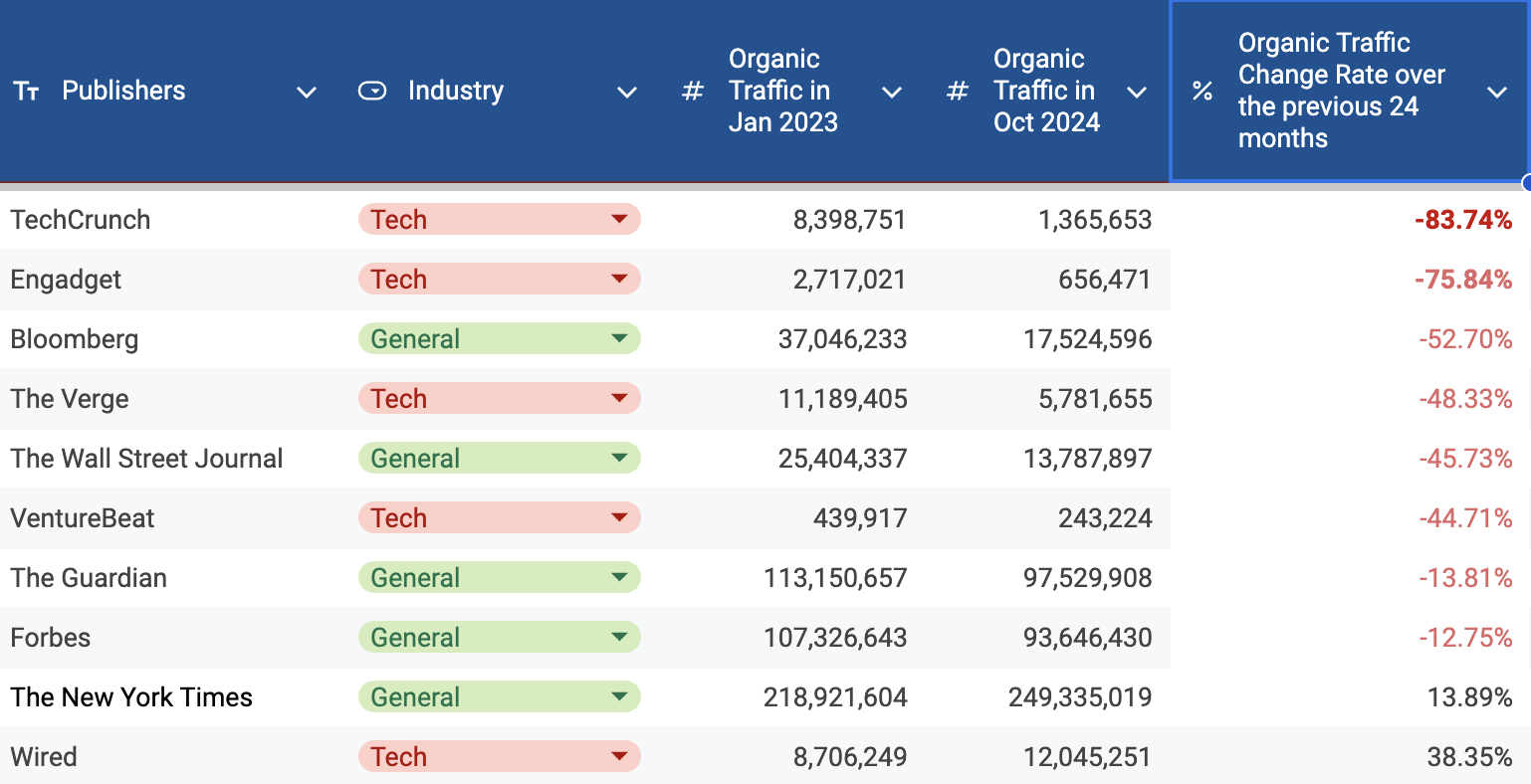
(Data Source: Semrush)
At the same time, AI search has entered its peak season, attracting more users than ever.
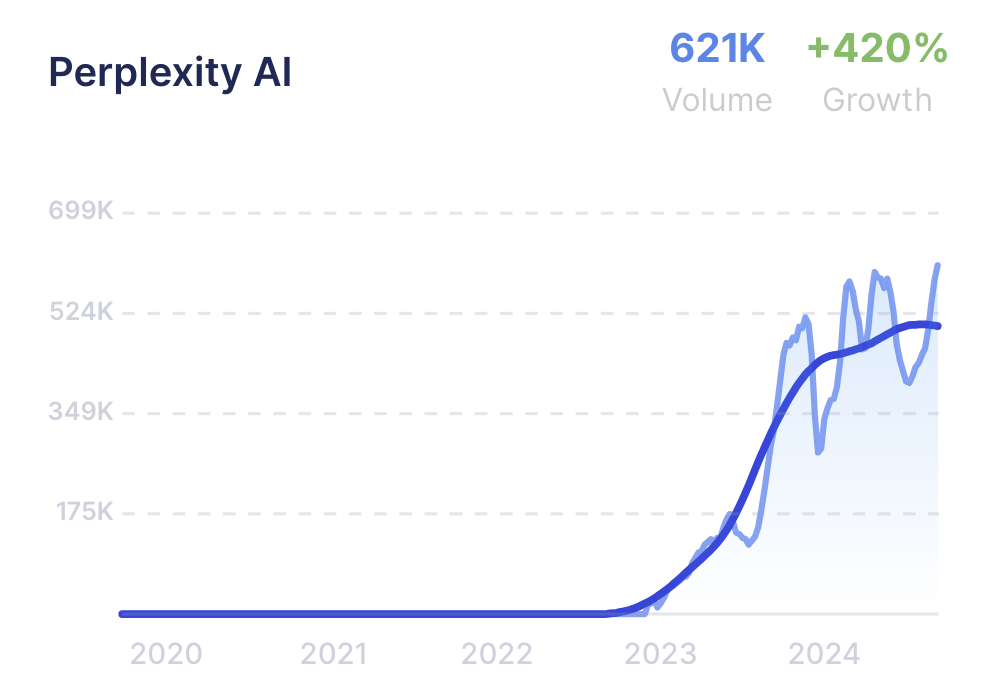
(Credit: https://meetglimpse.com/trend/perplexity-ai/)
Notably, a closer look at the data reveals that three of the top five publishers experiencing the most severe traffic declines are tech-focused. This trend likely reflects a shift among tech-savvy internet users, who now turn to AI for their source of information and insights. The more these publishers write about AI, the more they may inadvertently guide their audiences to use AI as the primary entry point for information. Consequently, the difference in audience exposure to AI tools like Perplexity seems to play a major role in these declines, rather than a lack of competitive strategy among other publishers.
However, Google’s recent decision to expand its AI-powered overviews worldwide signals that digital publishing may be headed toward an unavoidable turning point.
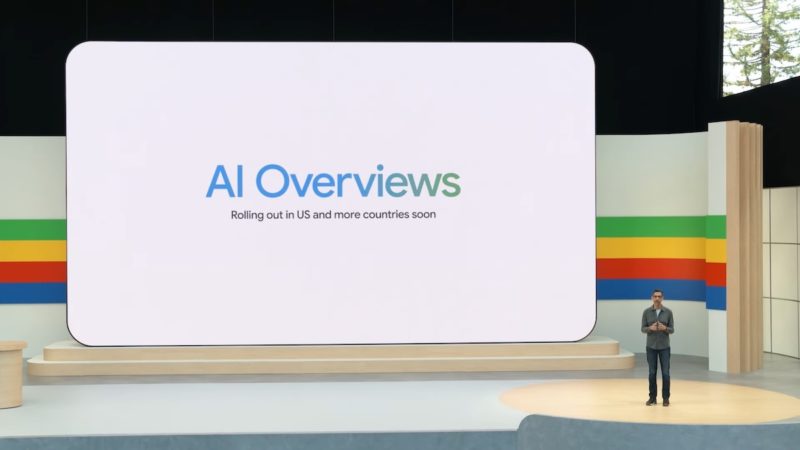
(Credit: Google Keynote (Google I/O ‘24)
Our findings
In response, we sought to uncover insights from the data that could aid publishers in enhancing their competitiveness and long-term survival. Our findings revealed valuable trends that the market may have overlooked.
We divided the observed publishers into two groups: Group A (the top five with the highest traffic drops) and Group B (those ranked sixth to tenth). Publishers in Group A had a higher proportion of traffic from sources like “Referral” and “Organic Social”,
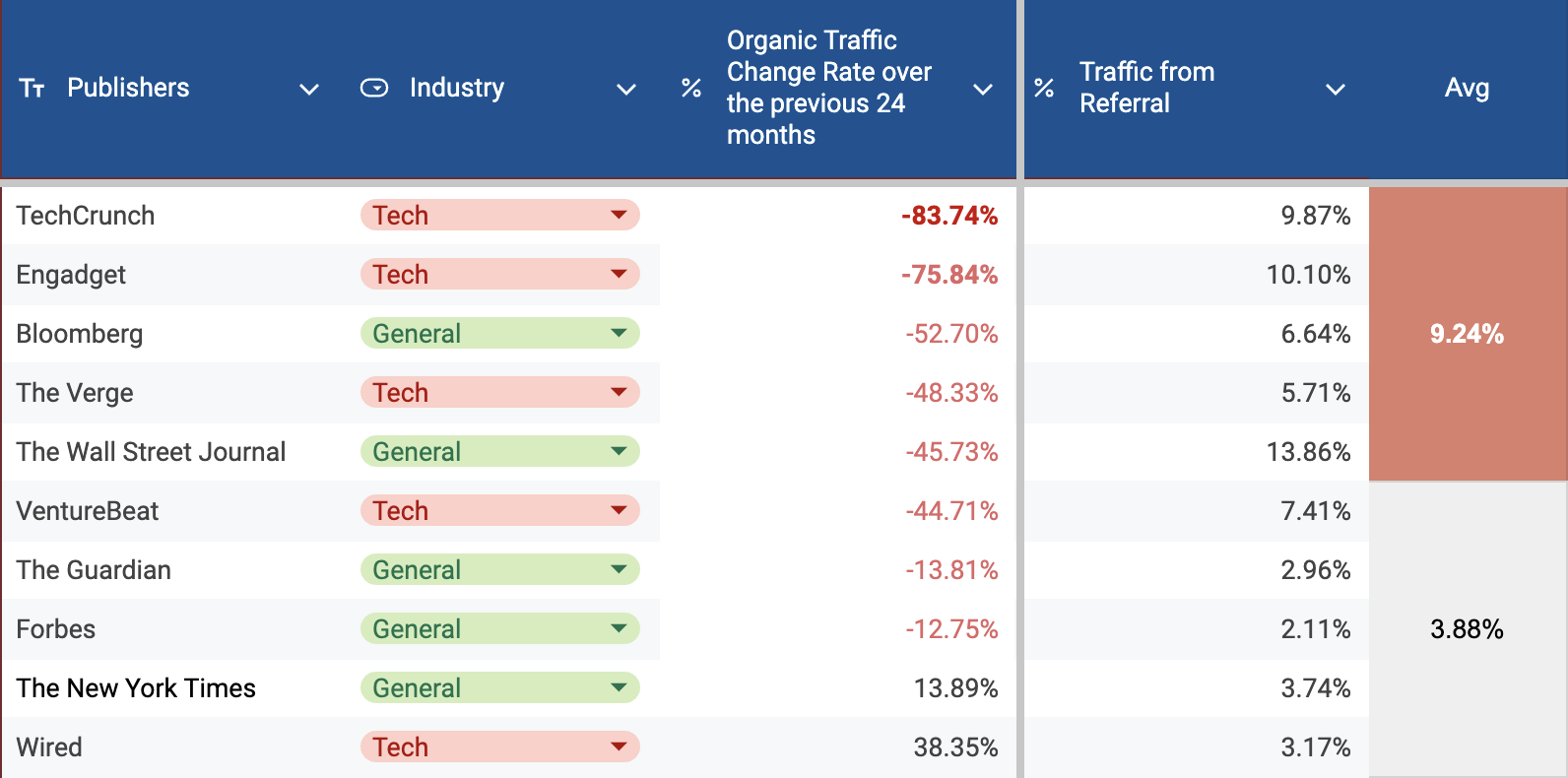
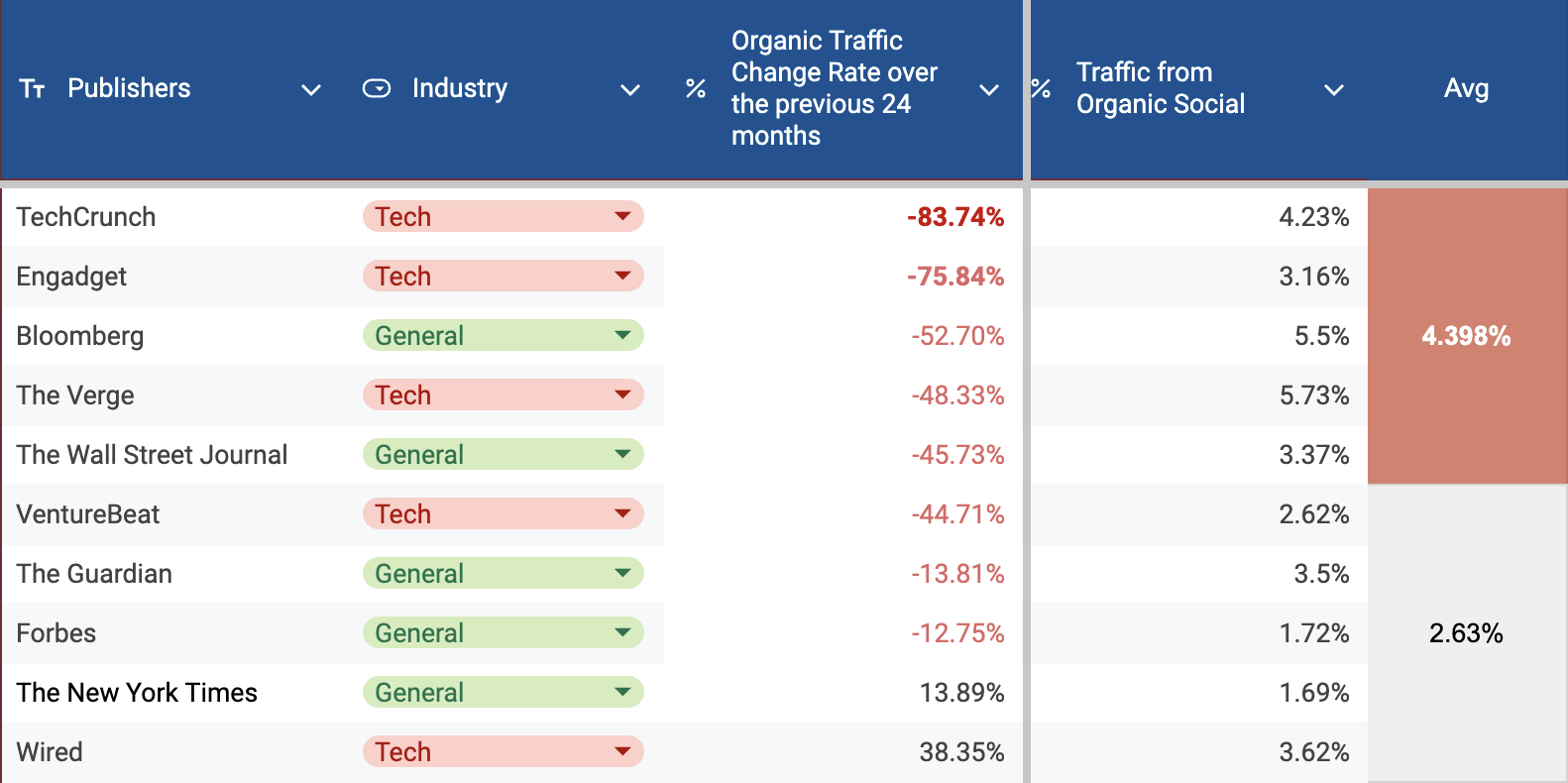
(Data Source: Semrush)
while Group B relied more heavily on “Direct Traffic” and “Organic Search,” channels that facilitate more direct connections with audiences.
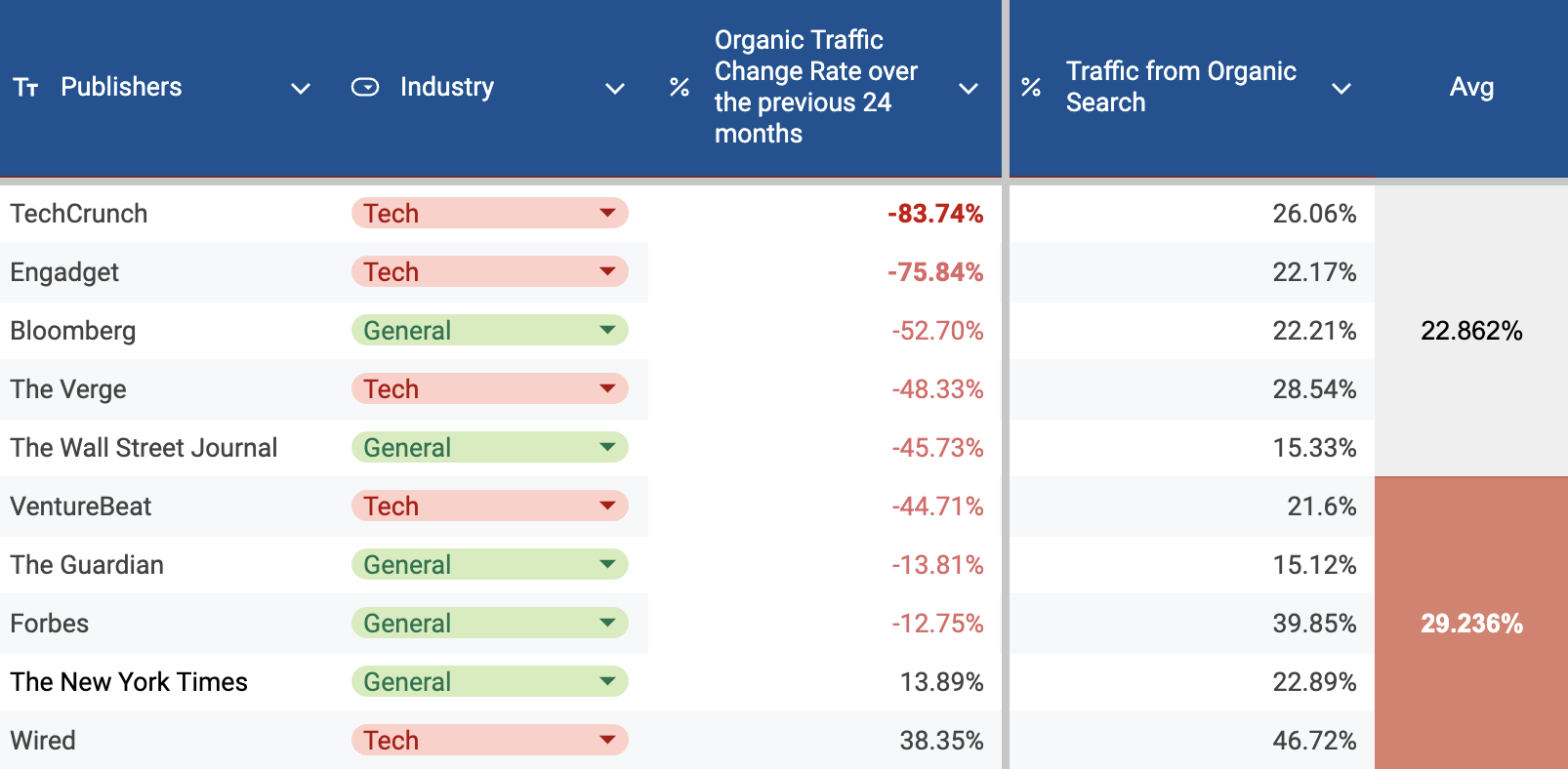
(Data Source: Semrush)
There was another intriguing pattern emerged when examining WIRED.
By relying heavily on ‘Organic Search’ and ‘Email (Newsletter)’ for its traffic, WIRED has achieved remarkable stability and growth over the past 24 months. This insight suggests that publishers who prioritize direct audience relationships can more effectively buffer against the disruptions posed by AI.
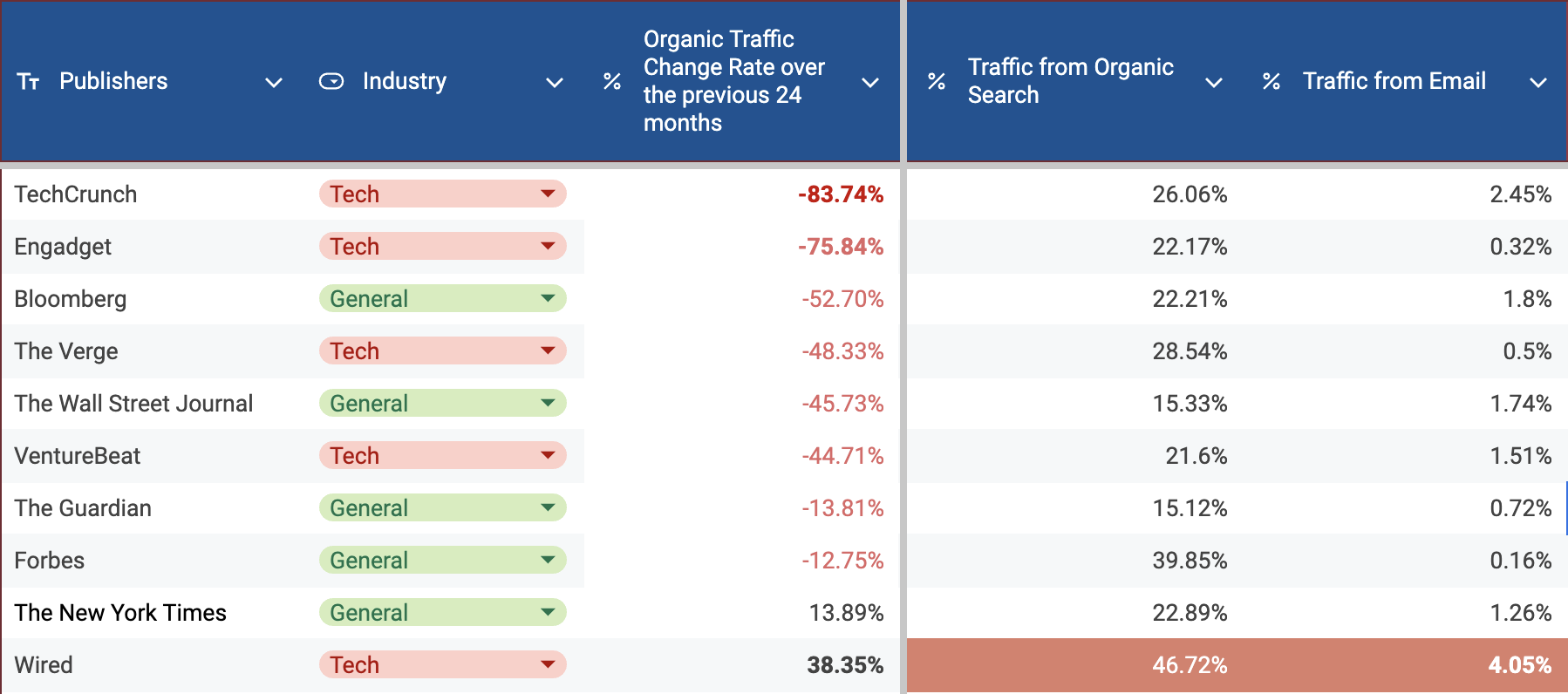
(Data Source: Semrush)
Our experience with clients has also demonstrated a similar trend. As tech providers, Protico empowers publishers and brands to create native community spaces on their platforms, fostering direct relationships with users. Over the past 12 months, 90% of platforms utilizing our solutions have seen a 2x-10x boost in organic traffic, while competitors have faced significant traffic declines.
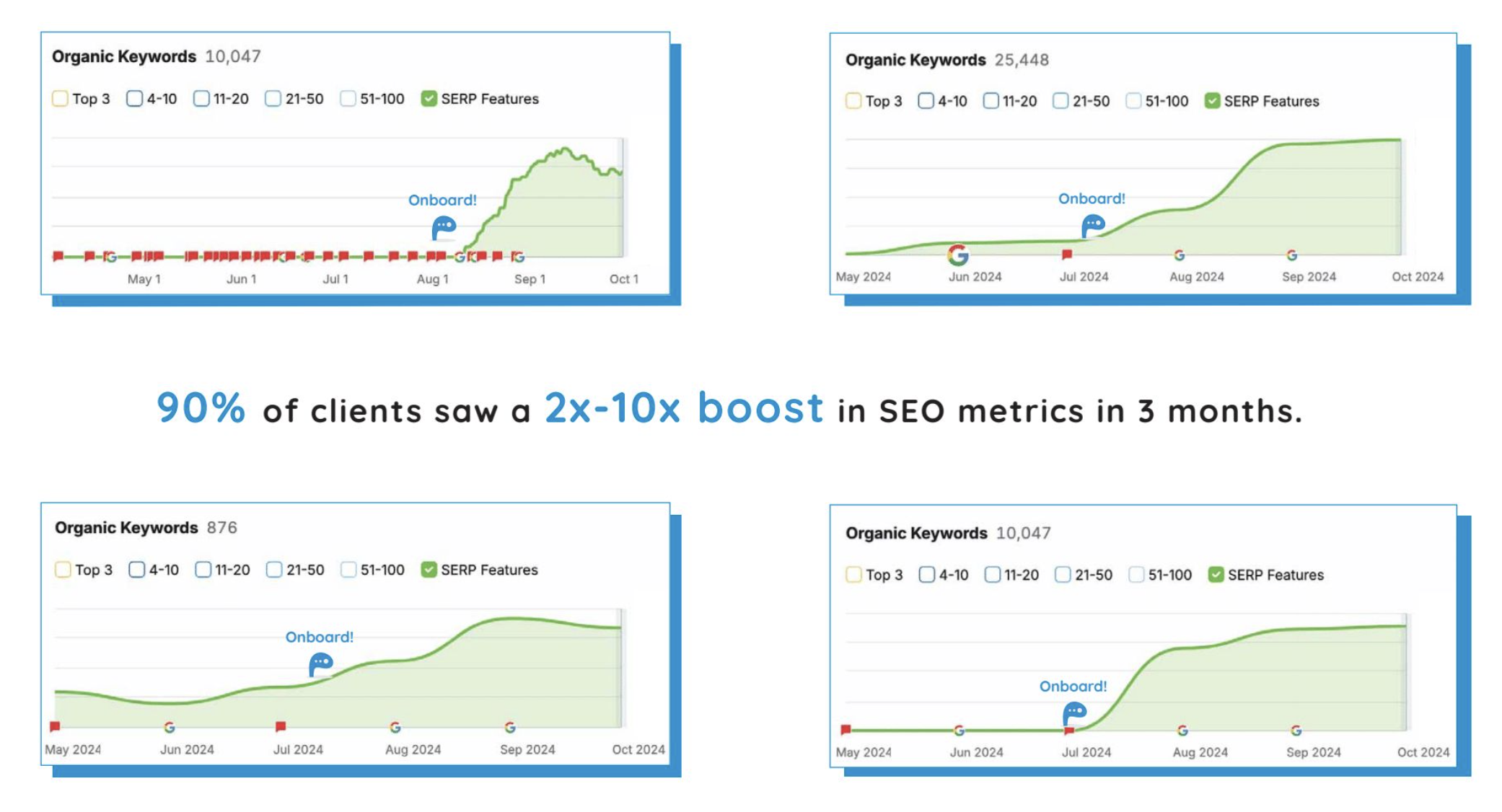
(Data Source: Semrush)
Our research and methodology indicate that relying on third-party platforms or channels to engage with audiences will likely increase publishers’ vulnerability to replacement by AI intermediaries.
While AI Search is often seen as a simple search tool, it fundamentally functions as a generative, editor-like system that processes existing content and rephrases it for end-users—a role traditionally filled by human editors in digital publishing. Thus, rather than labeling the tools as “AI Search,” a more accurate designation might be “AI Publishing.” Recognizing AI’s role as a publisher would foster a fairer market, where AI services take accountability for the content they present, potentially paying fees or offering credit to content sources.
From both business and technological perspectives, redefining ‘AI Search’ as ‘AI Publishing’ could yield significant benefits for both the AI and publishing industries. This relabeling not only brings clarity to AI’s evolving role but also sets a precedent for accountability in content creation, reinforcing the importance of fair attribution and compensation.
For traditional publishers, this shift offers a guiding framework to evolve into ‘AI-Embraced Publishers,’ allowing them to differentiate their unique value proposition from ‘AI-Native Publishers.’ Embracing this approach could help legacy publishers blend human insight with AI’s capabilities, creating a hybrid model that leverages direct audience relationships and curated content. Ultimately, this repositioning could enable publishers to reclaim their influence in a digital landscape increasingly shaped by AI, securing a sustainable future for digital publishing.
This article references data from Semrush, which provided crucial insights into the shifts occurring in digital publishing. We also extend our appreciation to the media outlets highlighted in this study—TechCrunch, Engadget, Bloomberg, The Verge, The Wall Street Journal, VentureBeat, The Guardian, Forbes, The New York Times, and WIRED—whose contributions to the field helped shape our analysis. Should these insights resonate, we welcome you to share this piece with your audience as well!
And, for any interest in more insights from our collaboration with publishing partners, or to discuss how we might support your own strategies during this transition with our tech, feel free to reach out via our lobby (located at the bottom right of this page) or email us at [email protected]